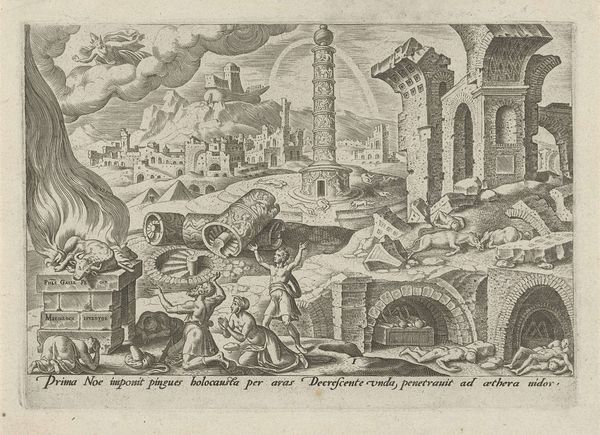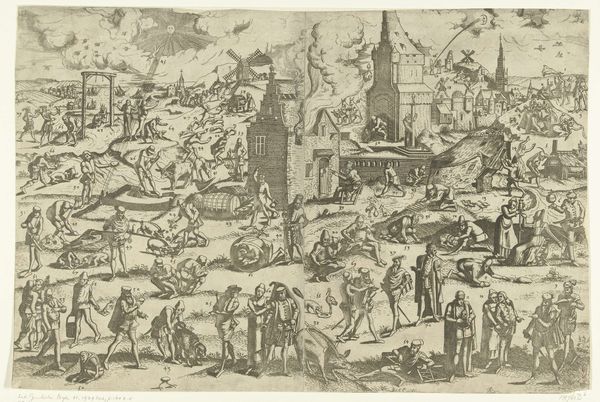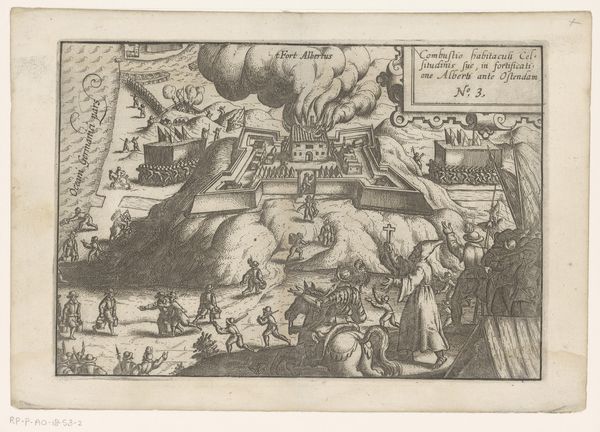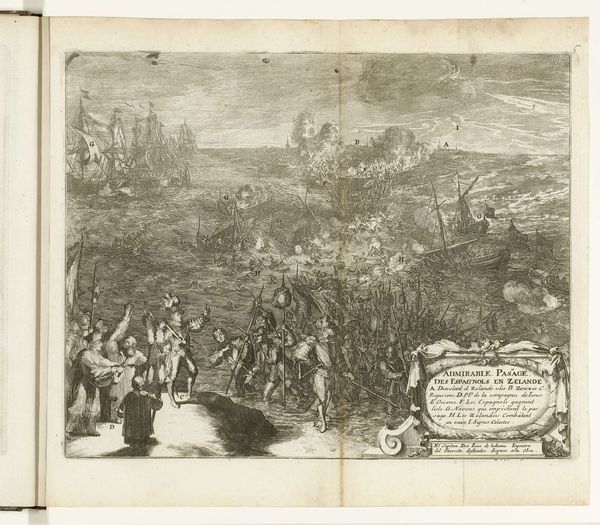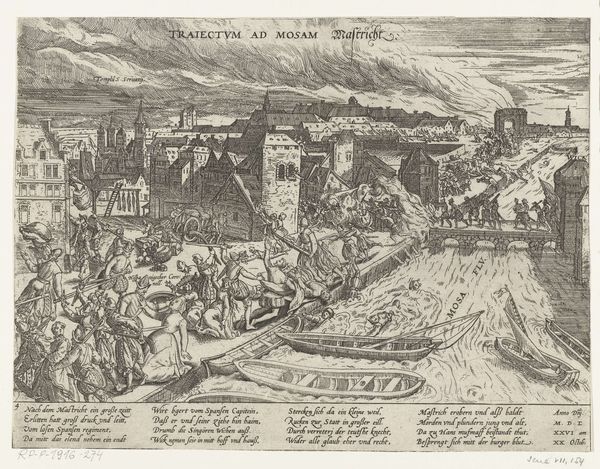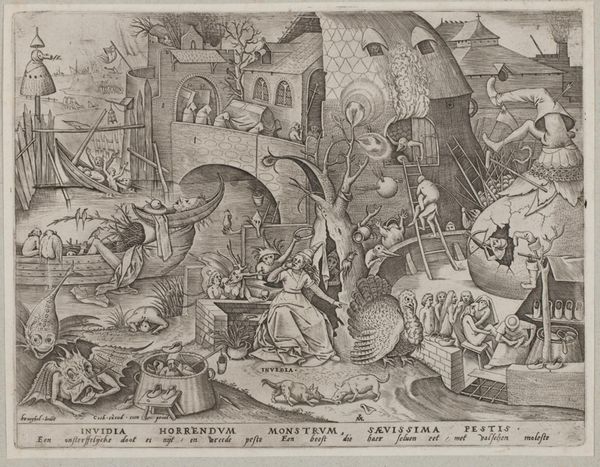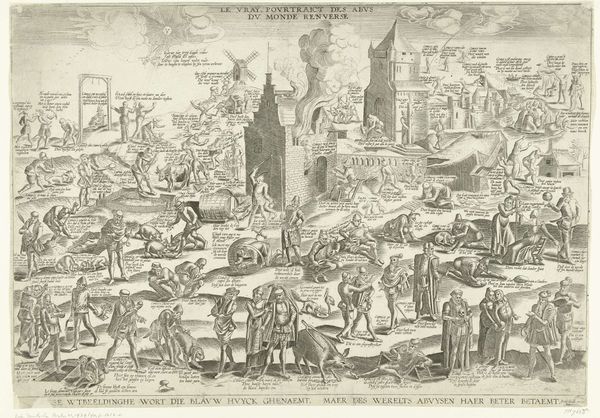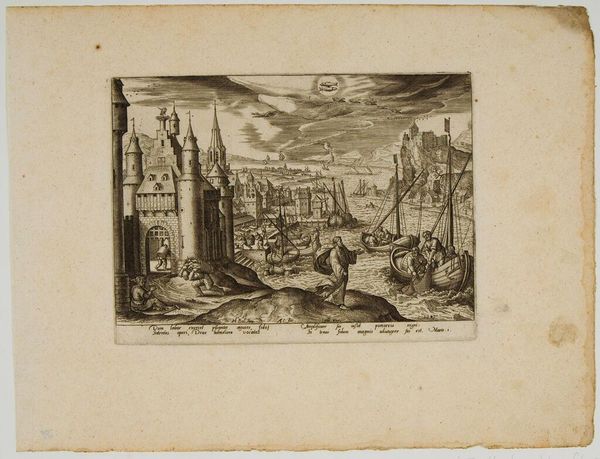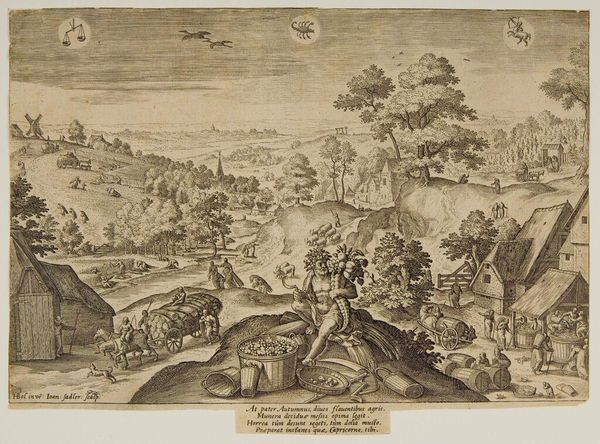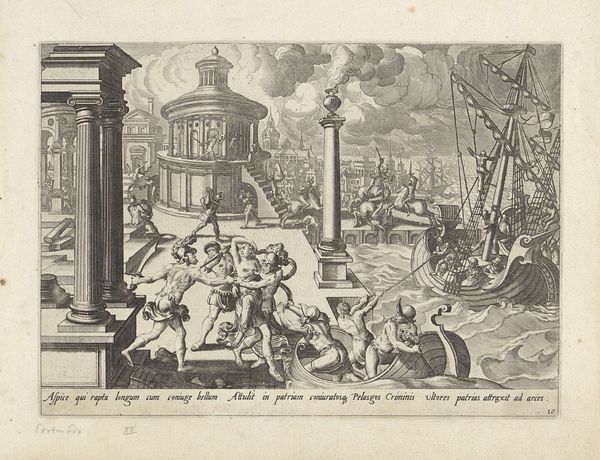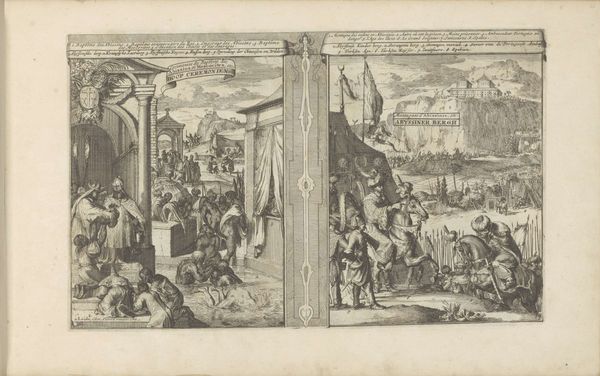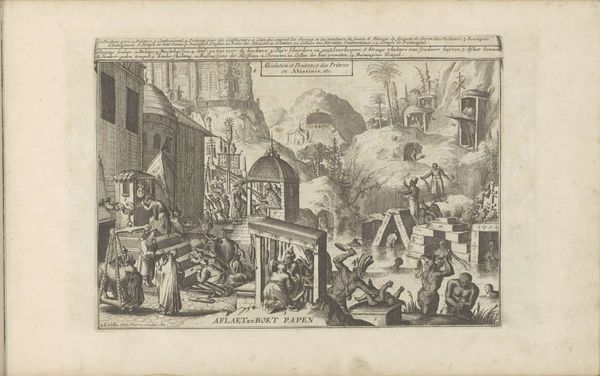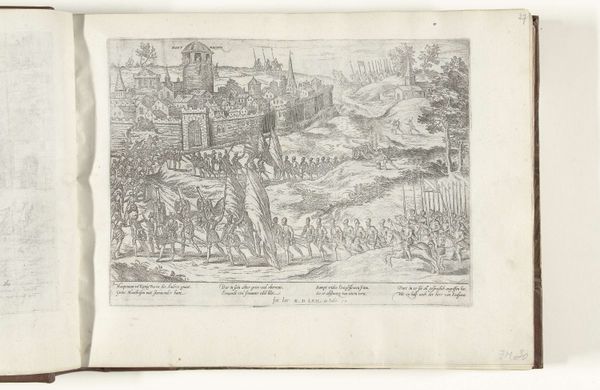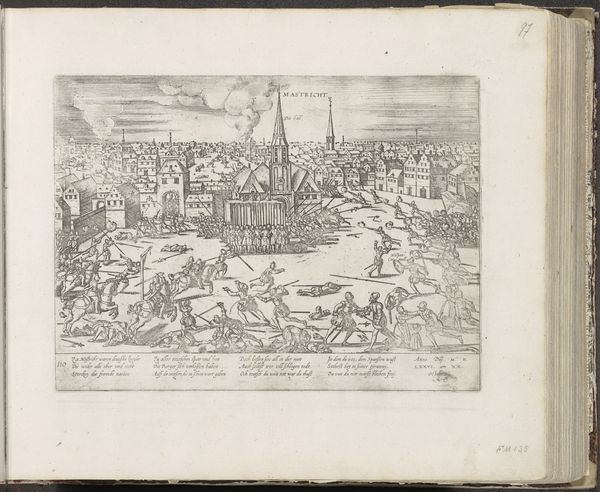
print, etching, engraving
#
aged paper
#
toned paper
#
baroque
# print
#
etching
#
old engraving style
#
landscape
#
cityscape
#
engraving
Dimensions: height 213 mm, width 301 mm
Copyright: Rijks Museum: Open Domain
Curator: Here at the Rijksmuseum, we have an intriguing print titled "Schepen en speeljachten" – Ships and pleasure yachts – attributed to Romeyn de Hooghe, dating from between 1682 and 1733. It's an engraving on paper. Editor: It strikes me as incredibly busy, almost chaotic, yet there's a clear structure. The foreground feels incredibly active, like a bustling marketplace. The boats create a complex, interwoven tapestry. Curator: Exactly. This etching allows us a glimpse into the socio-political dynamics of maritime culture during that era. De Hooghe was known for his political allegiances; examining what types of ships are emphasized and the activities depicted offers insights into Dutch naval power and colonial trade. The print, like much art of the period, served as both record and propaganda. Editor: The contrast in the activities happening between people within and surrounding the ships invites a powerful dialogue regarding class and labor. It reflects on the societal hierarchy intertwined with seafaring. I'm drawn to the depiction of individuals in the lower left seemingly involved in some kind of preparation or transaction—it raises many questions about their position relative to those on the ships. Is it forced or consensual labor? And what are its racial dimensions? Curator: Those are precisely the kinds of urgent questions we need to consider! We can look at it in light of post-colonial theory to analyze its representation of global trade networks and the exploitation often inherent within such representations. We also see figures engaged in leisurely activities onboard the ships, really reinforcing these societal distinctions. Editor: Absolutely. Also, the placement of indigenous people is deeply revealing. Are they truly integral to this landscape, or presented as mere exotic backdrop against European endeavor and enterprise? These images are loaded with meaning. Curator: By contextualizing the work within social power structures of that time, it is clear it reflects a certain world-view... Editor: Making visible even deeper ideological currents and cultural anxieties. It serves to remind us to always scrutinize our cultural records. Curator: I agree. There's so much layered history here. I am left pondering how prints like these helped construct and disseminate particular perspectives within European society at this time.
Comments
No comments
Be the first to comment and join the conversation on the ultimate creative platform.
